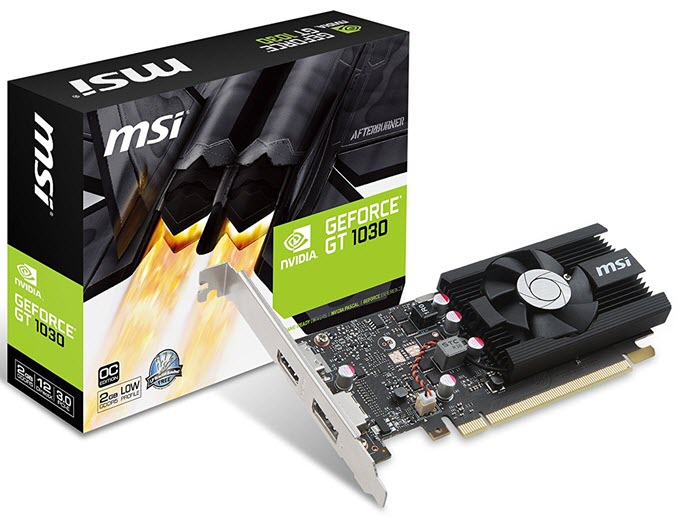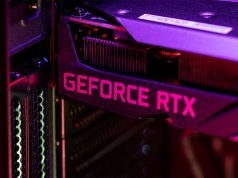UNBOXING the MSI GT 1030 Low Profile OC
Our rating:
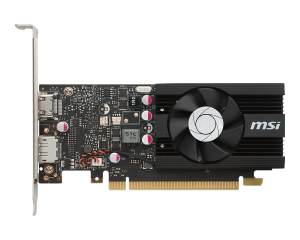
It is a very interesting video card coming from the lower-end spectrum of the Nvidia Pascal-based graphic cards.
MSI’s rendition of the GT 1030 is a single slot card with a low-profile PCB and actively cooled by a single fan on a small block of heat sink. It is 6.26in long and it will fit in small and low profile PC cases, which right now are de rigueur.
What is the GT 1030?
The GT 1030 is the successor to the GT 730. It is powered by the Pascal architecture and uses a graphics processor called the GP108. It has 384 shader units, 2GB of GDDR5 VRAM, 64bit memeory bus, it has a core clock of 1265MHz with a boost clock of 1518MHz, and a memory clock of 1502MHz with an effectivity up to 6008MHz.
Who is this card for?
Take note that Nvidia is not positioning this as a gaming graphics card, but rather a video card for those who want an upgrade from their PC’s integrated graphics and are looking to have enough graphics power to use for productivity applications like Photoshop, a little bit of video editing, and of course, even some light gaming.
So what’s in the box of the MSI GT 1030 Low profile OC?
Upon unboxing, you will find the graphics card itself, a low profile bracket, a driver CD and a manual. The Graphics Card has 2 outputs: HDMI and DisplayPort. It doesn’t need an external PCI-e power connector and it only has a TDP of 30w. And as mentioned earlier, actively cooled with a small block of aluminum heatsink and fan.
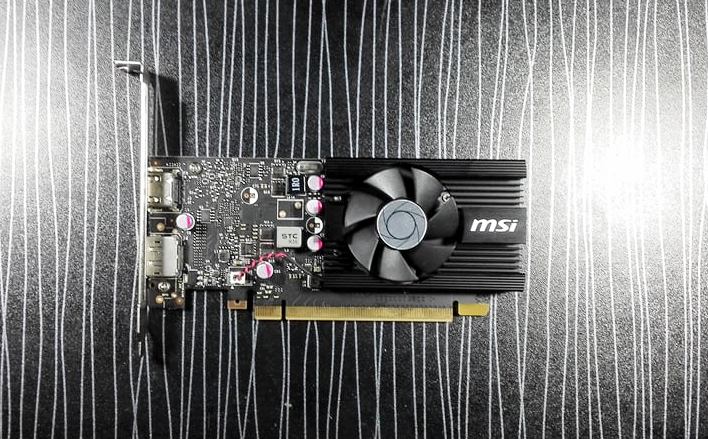
Testing platform
For testing, we will be pairing it with the Core i7 2600 and 8GB of DDR3 ram. All video capture will be recorded using an External video capture device. All applications that will be used in the test will be in 1920×1080 resolution (1080p). Some games will be played in 1280×720 resolution (720p).
How does this perform with productivity applications?
So, for Adobe Photoshop, we think it helps a lot with the GPU-accelerated functions like adding effects. We’re not really a Photoshop expert but you can read more about how a GPU helps with Photoshop by reading the FAQ from the Adobe website.
As for video editing, we use Vegas Movie Studio to create our videos in 1080p resolution using mp4 files. There is definitely a boost in performance when we’re scrubbing through the timeline with the preview set to Good (Auto), especially when we have multiple tracks and effects on it. It is a lot smoother compared to using the Intel Integrated Graphics of our i7 2600. As for video rendering, we don’t think it made much of an improvement because video rendering with Vegas Movie Studio or Adobe Premiere is mostly CPU bound. Watch this video from JayzTwoCents to see exactly what we mean.
GPU acceleration is much more noticeable when rendering a project in Blender. Our 1080p intro file rendered in 7 minutes and 45 seconds using Open GL GPU acceleration compared to 3 hours and 6 minutes without GPU acceleration.
Okay, so how is it’s gaming performance?
Gaming performance is quite impressive on quite a lot of titles.
Counter Strike: Global Offensive High settings – 155 FPS average.
Dota 2 using the “Best looking” settings – 62 FPS average.
StarCraft 2 using High settings – 94 FPS average.
But then, the GT 1030 struggled with games that are more graphically demanding that they had to be played in 720p.
Shadow of Mordor using High settings – 54 FPS average
Ghost Recon Wildlands in Low settings – 55 FPS average
How is the noise level and temperatures under heavy load?
We ran a burn test with FurMark in 1080p for 10 minutes and the GPU temp got a maximum temperature of 81°C and the tiny fan didn’t really make much of a noise even when it’s fully throttled.
Conclusion
Overall, we think this is a very good entry-level card. Although according to other reviews the older GTX 750 Ti still performs better. We think the advantage of this Pascal-based graphics card is that it has a more modern architecture — it does has low TDP and a low-profile size. This is going to be a perfect graphics card for Home Theatre PCs and even home-office PCs that will benefit from it’s humble graphical power using productivity applications.
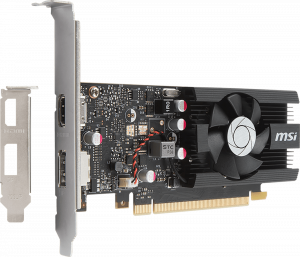
MSI GT 1030 2G LP OC quick specs
Interface: PCI Express 3.0 x16 (uses x4)
GPU: GeForce GT 1030 by Nvidia
Core Clock: 1265 MHz
Boost Clock: 1518 MHz
CUDA Cores: 384
Effective Memory Clock: 6008 MHz
Memory Size: 2GB
Memory Interface: 64-Bit
Memory Type: GDDR5
DirectX: DirectX 12
OpenGL: OpenGL 4.5
HDMI: 1 x HDMI
Multi-Monitor Support: 2
DisplayPort: 1 x DisplayPort
Cooler: Single Fan
Power Consumption: 30W
Recommended PSU: 300W
HDCP Ready: 2.2
Form Factor: Low Profile
Max GPU Length: 159 mm
Card Dimensions (L x H): 6.26″ x 2.72″
